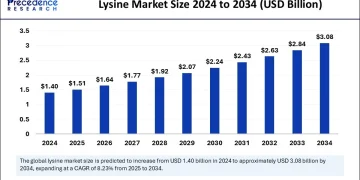The healthcare industry is facing unprecedented challenges as patient care demands continue to rise. This growing pressure requires healthcare providers to adapt and implement effective strategies to ensure high-quality care for all patients. In this blog post, we will explore practical strategies that healthcare providers can adopt to meet these increasing demands and maintain excellent patient care.
In this article, we’ll explore:
- Implementing advanced technology solutions to streamline patient care and improve efficiency.
- Increasing the workforce capacity through recruitment and targeted training programs.
- Enhancing patient engagement and satisfaction by adopting patient-centric care models and feedback mechanisms.
Understanding the Rise in Patient Care DemandsIncreasing Population
One of the primary reasons for the rise in demand is the increasing population. More people mean more patients needing healthcare services. Healthcare providers must prepare to handle this growing number of patients efficiently.
Aging Population
In addition to the overall population increase, the aging population is another significant factor. Older adults often require more medical attention and have multiple health issues that need to be managed. This places additional strain on the healthcare system.
Advances in Medical Technology
Advancements in medical technology have led to better diagnosis and treatment options, resulting in more people seeking medical care. While these advancements are beneficial, they also contribute to the increase in patient care demands.
Strategies for Addressing Patient Care DemandsEnhancing Workforce CapacityHiring More Healthcare Professionals
One of the most straightforward solutions is to increase the number of healthcare professionals. Hiring more doctors, nurses, and support staff can help distribute the workload and reduce burnout among existing staff members.
Providing Ongoing Training
Offering continuous education and training for healthcare professionals ensures they are well-equipped to handle the latest medical advancements and patient care techniques. This not only improves the quality of care but also boosts staff morale.
Utilizing Telehealth Services
Telehealth services allow healthcare providers to reach more patients without the need for physical visits. This can significantly reduce the burden on hospitals and clinics, making it easier to manage the demands.
Improving Healthcare InfrastructureExpanding Facilities
Expanding existing healthcare facilities and building new ones can help accommodate the growing number of patients. This can include adding more hospital beds, clinics, and specialized treatment centers.
Upgrading Equipment
Investing in modern medical equipment and technology can enhance the efficiency of healthcare services. Upgraded equipment can lead to quicker diagnoses and treatments, ultimately improving patient outcomes.
Implementing Electronic Health Records (EHR)
Electronic Health Records (EHR) systems streamline the management of patient information. EHRs make it easier for healthcare providers to access and share patient data, leading to better coordination of care.
Enhancing Patient ExperienceReducing Waiting Times
Long waiting times can be frustrating for patients and can negatively impact their overall experience. Implementing efficient scheduling systems and optimizing patient flow can help reduce waiting times and improve patient satisfaction.
Providing Clear Communication
Clear communication between healthcare providers and patients is crucial for ensuring that patients understand their treatment plans and feel supported. This can be achieved through regular updates, patient education materials, and open lines of communication.
Offering Personalized Care
Personalized care involves tailoring treatment plans to meet the unique needs of each patient. This approach can lead to better patient outcomes and higher levels of satisfaction.
Promoting Preventive CareEncouraging Regular Check-Ups
Regular check-ups can help identify potential health issues before they become severe. Encouraging patients to attend routine appointments can lead to early intervention and better health outcomes.
Educating Patients on Healthy Lifestyles
Providing patients with information on healthy lifestyles, such as proper nutrition and exercise, can help prevent chronic diseases and reduce the overall demand for healthcare services.
Implementing Vaccination Programs
Vaccination programs are essential for preventing the spread of infectious diseases. By promoting and providing vaccinations, healthcare providers can protect public health and reduce the burden on the healthcare system.
Leveraging TechnologyUsing Artificial Intelligence (AI) in Healthcare
AI can be used to analyze patient data, predict health trends, and assist in diagnosis and treatment planning. This technology can help healthcare providers make more informed decisions and improve patient care.
Implementing Remote Monitoring Systems
Remote monitoring systems allow healthcare providers to track patients’ health status from a distance. This can be particularly useful for managing chronic conditions and reducing the need for frequent in-person visits.
Utilizing Mobile Health Applications
Mobile health applications can provide patients with access to health information, appointment scheduling, and communication with healthcare providers. These apps can enhance patient engagement and streamline healthcare processes.
Collaboration and PartnershipsPartnering with Other Healthcare Providers
Collaborating with other healthcare providers can help share resources and expertise, leading to improved patient care. This can include partnerships between hospitals, clinics, and specialized treatment centers.
Engaging Community Organizations
Community organizations can play a vital role in promoting public health and providing support services. Healthcare providers can work with these organizations to reach underserved populations and address social determinants of health.
Involving Patients and Families
Involving patients and their families in the healthcare process can lead to better health outcomes and higher levels of satisfaction. This can include involving them in decision-making and providing support and education.
To Sum Up
Meeting the rising demands of patient care is a complex challenge that requires a multifaceted approach. By enhancing workforce capacity, improving healthcare infrastructure, enhancing patient experience, promoting preventive care, leveraging technology, and fostering collaboration and partnerships, healthcare providers can effectively address these demands.
The strategies outlined in this blog post offer practical solutions that can help healthcare providers maintain high-quality care and ensure positive patient outcomes. By adopting these strategies, healthcare providers can stay ahead of the curve and continue to meet the needs of their patients.
If you would like to learn more about how to implement these strategies in your healthcare practice, consider reaching out to industry experts or attending relevant workshops and conferences. Remember, the ultimate goal is to provide the best possible care for your patients while managing the increasing demands on the healthcare system.










